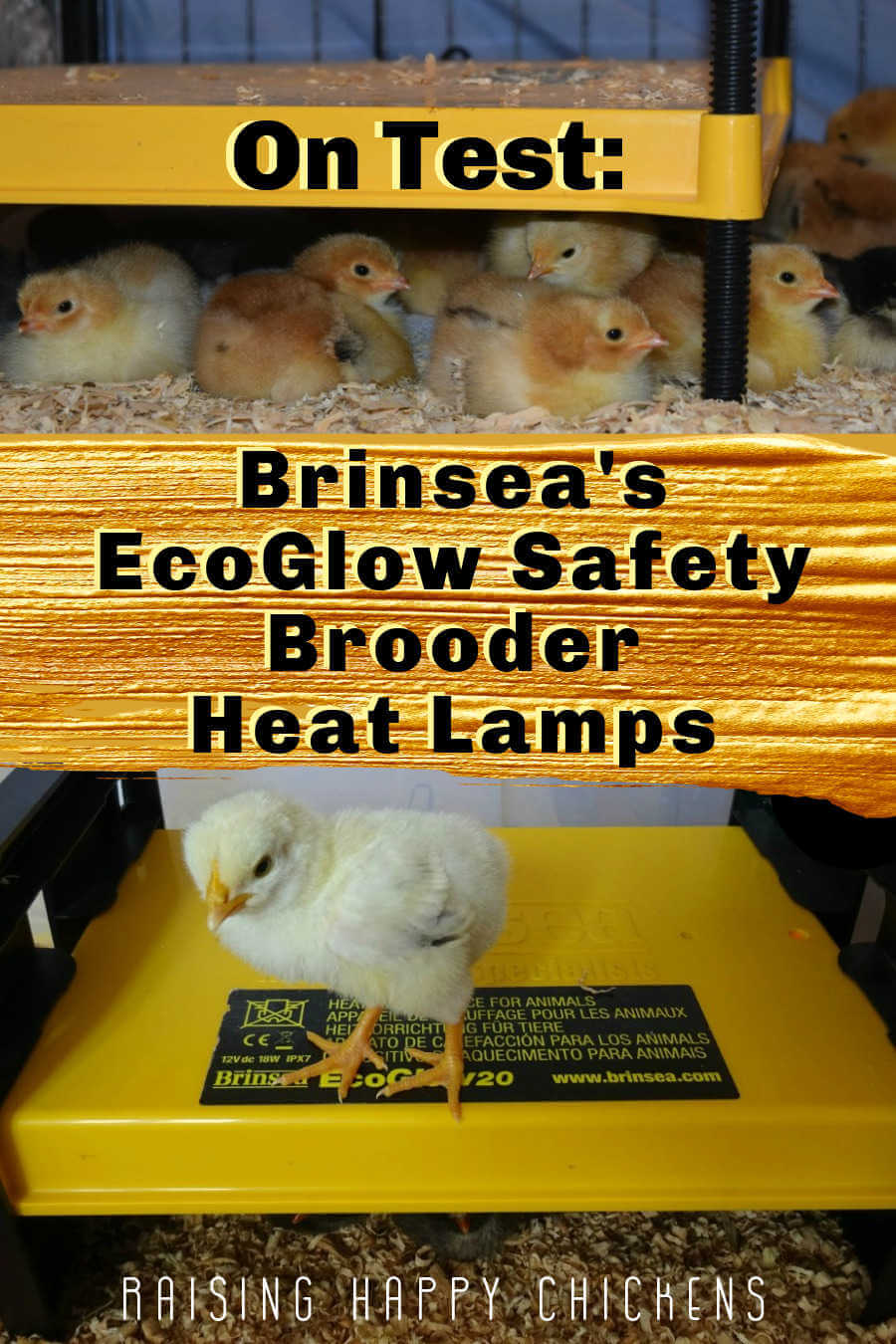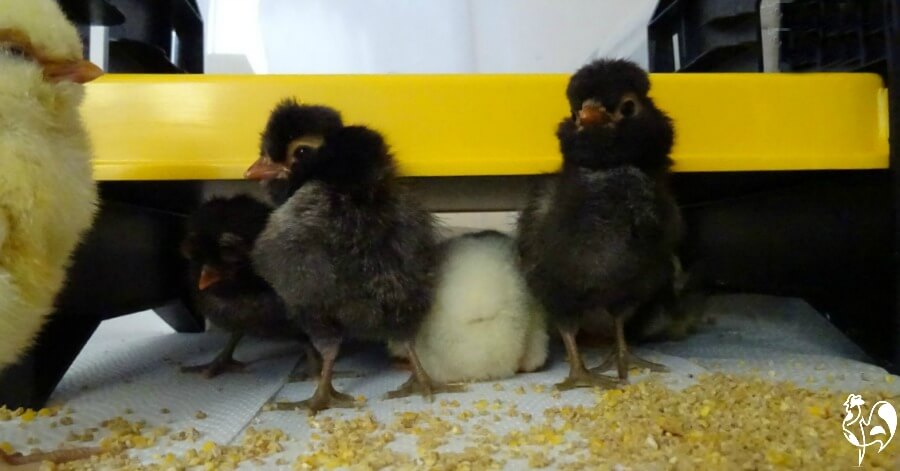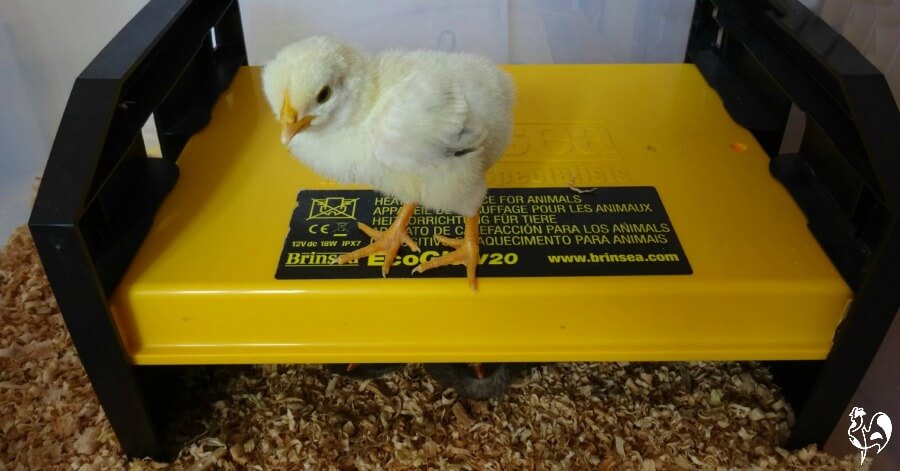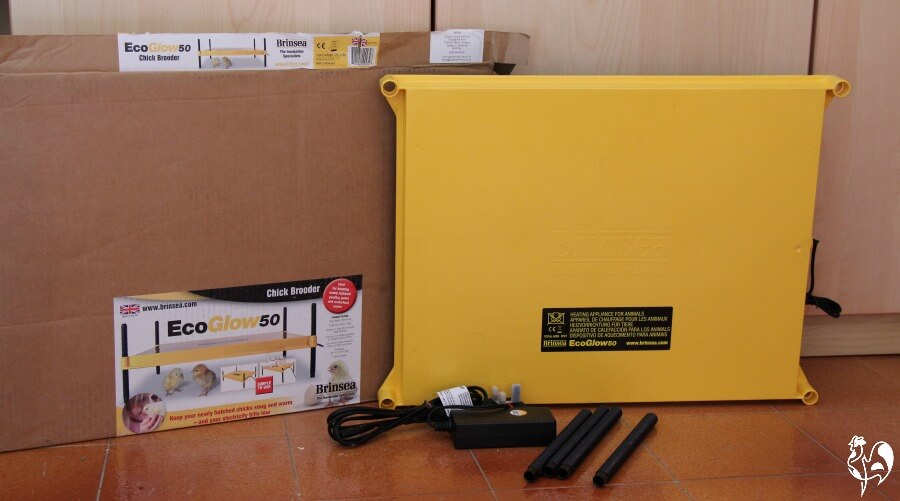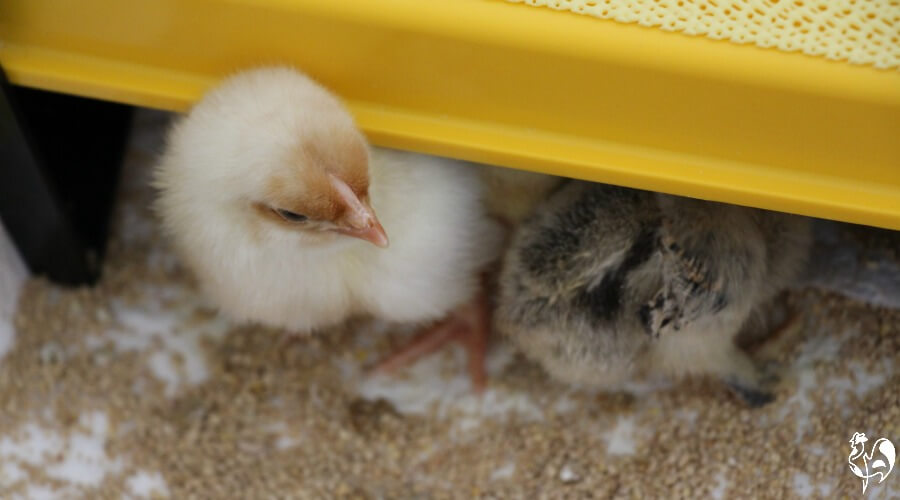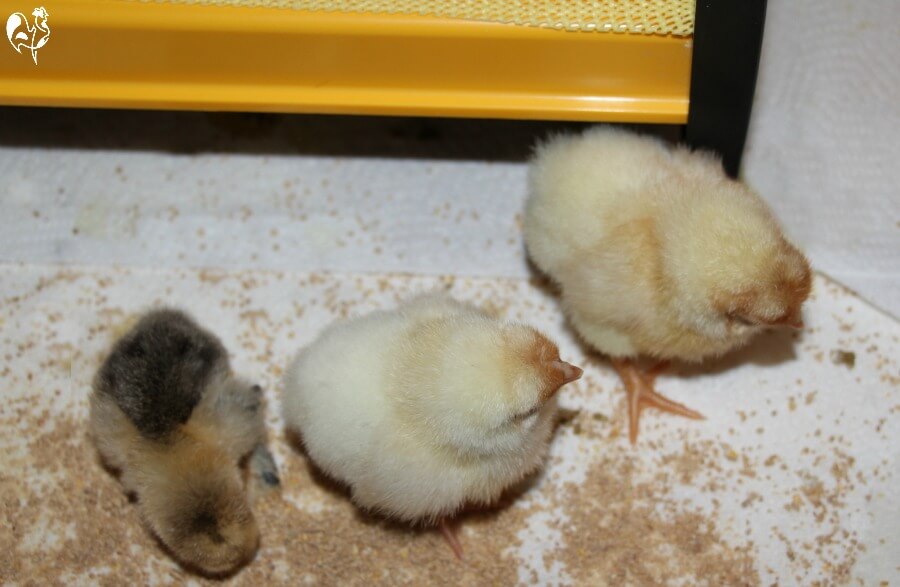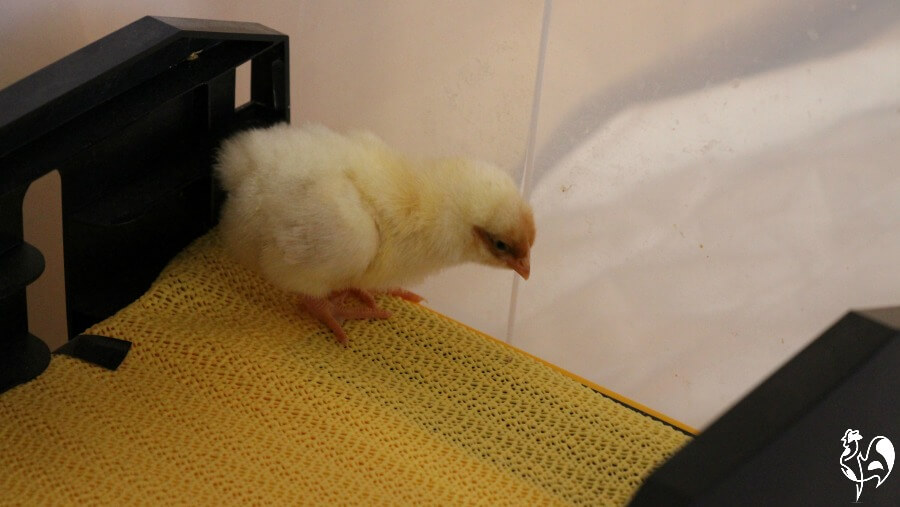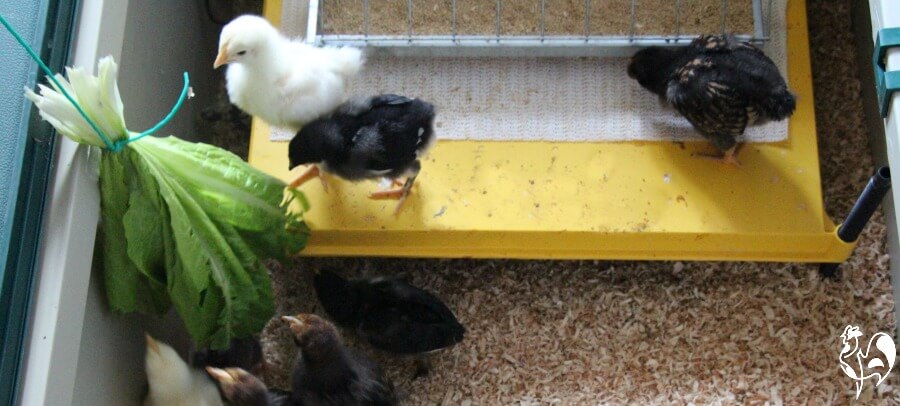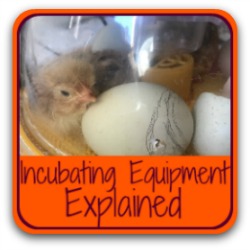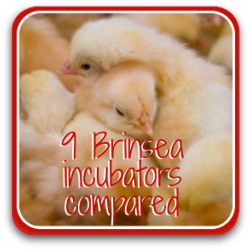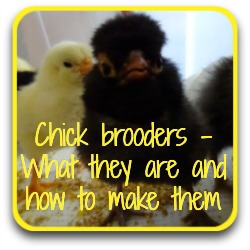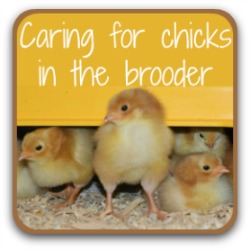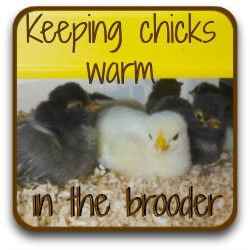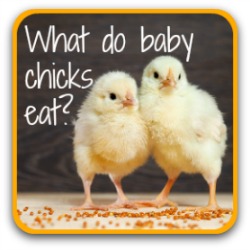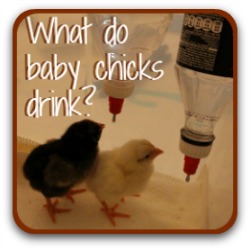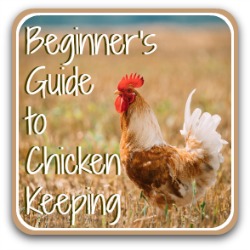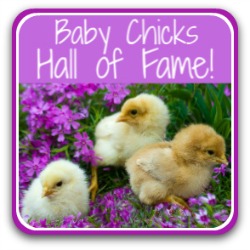- Home
- Chicks in the Brooder
- Lamp review
Brooder lamps: a review of the Brinsea EcoGlow.
What is a heat lamp and why is it important in the brooder?
Fact: new chicks aren't able to control their temperature. Their downy fluff is not enough to keep them warm. Without a mother hen, they need to have additional help until they grow feathers.
So we need to be that mother hen, and help them stay warm enough to survive.
For that reason it's imperative to have a safe, reliable heat source in the brooder to keep chicks warm when they're first hatched.
Traditional heat lamps can be dangerous. They start more fatal fires each year than any other piece of equipment.
In this article I look at why, and how to find a safe source.
I use my many years' hatching and brooding experience to review what are said to be the best and safest brooder lamps on the market: Brinsea's EcoGlow Safety.
There are now (2022) three separate sizes: for up to 25, 35 and 50 chicks. I'm reviewing them together because they're essentially the same.
The question I will answer for you: are they value for money? Do they serve the purpose they were made for – to keep chicks warm enough?
But let's start at the beginning.
What is a brooder lamp?
It's simply a method of adding reliable heat to the chick brooder, to make sure that chicks are able to sustain the right temperature to allow for safe and development.
Knowing what temperatures chicks need at different points during the first eight weeks is critical.
- For more detailed information about appropriate heat levels, see this article.
- For further information about setting up a DIY brooder box to meet your chicks' needs, see this article.
Why not use a traditional heat lamp?
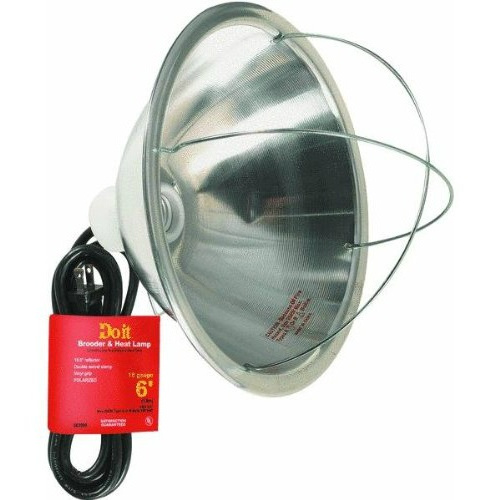
This is a traditional heat lamp. Its main advantage is that it's very inexpensive. Its main disadvantage is that it's very dangerous.
Which is why I will never use or recommend this type of heat source for either a brooder box or a chicken coop.
I've seen too many examples of livestock - usually but not only chickens - killed by fires started by one of these.
They come specifically recommended for brooders, but if the front of the lamp touches anything flammable - a cardboard brooder, chick down or feathers, or bedding, for example - there is a real risk that the heat will set it on fire.
Which is why radiant heat lamps are far safer.
If you purchase a product through links on this page I receive a small commission at no cost to you. I was not paid for writing this review, and I did not receive the product as a freebie. I'm suggesting it for you because I own it and love it, and I think you would, too. For more information please see this policy.
How does the Brinsea brooder heat lamp work?
There's a reason it's called the "EcoGlow Safety" brooder lamp.
Unlike a traditional heat lamp, all the Brinsea brooder lamps work on radiant heat. Whereas normal heating relies on a heat source warming the air, this works by an element warming on contact.
The black metal warming plate on the underneath of the unit spreads heat evenly and does not get hot. When the chick's body is placed close to it, it transmits direct warmth from the element to the chick. There is no heat source to spark a fire.
In that sense it's much more like the way a mother hen would warm her chicks, which is partly why I like it.
A lot of reviews of this product don't understand this principle and people get very worried that the unit itself does not get hot.
It doesn't need to.
The EcoGlow Safety 600 small brooder lamp: pros and cons.
Pros.
- The major advantage of this heat source is that it is completely safe. I can set it up and leave it in the brooder box without any anxiety about chicks getting burned or the brooder setting on fire.
- The original EcoGlow consisted of the flat panel heating element, and two side panels with slots where the yellow panel fitted. This didn't work well - the side panels weren't flexible enough and would break. So much so that the tabs on my heat panel snapped off and I needed to superglue them back on.
- Brinsea responded to this criticism and changed the method so that the current models have legs which simply screw into slots at each corner of the lamp. So much easier - and a great response by the company, who took the trouble to listen to customer feedback and respond with a design change.
- The legs can be adjusted easily, so that the brooder lamp can be set very close to the ground when the chicks are newly-hatched, and raised as they get bigger.
- For bantams, make the legs on one end shorter than the other, creating a tiny space at one end and a bigger space at the other. This means that bantams and large breeds can use it at the same time.
- This unit uses much less electricity than a traditional heat lamp. Because I hatch different batches of eggs during the winter I had both the large and small EcoGlow switched on for three months and didn't even notice a difference in my electricity bill!
- The average saving over a traditional heat lamp is estimated at around $11 - $15 per four week period.
To buy the smaller EcoGlow (20 chicks) click the button below.
Update, January 2022: Brinsea seem to have withdrawn the smaller brooder lamp. I've contacted them for information and will update here when they respond.
In the meantime, this link is for the larger heater.
Cons.
- Brinsea say that up to twenty chicks can fit under this brooder lamp. I would say that's an overestimate. It may be right for very new standard breed chicks, but only for about three weeks - and even then it's stretching it.
- If they're going to need it for any longer than about three weeks - if you're hatching in the winter, for example - it won't be enough for more than about six chicks at a time, in my view.
- As you can see from this photo, even at 3 weeks old my 18 chicks were cramped under the smaller EcoGlow 20 and needed to graduate to the larger EcoGlow 1200.
- So for more than six chicks, I would opt for the larger EcoGlow Safety 1200. See my review of it below.
- For either of these lamps (small or large) to work effectively, the temperature of the room itself needs to be around 13ºC (55ºF). I've used it in a colder room during winter and I needed to supplement the room heat.
The EcoGlow Safety 1200 large brooder lamp: pros and cons.
As you can see from my box below, this used to be called the EcoGlow 50. Even since this photo, Brinsea have slightly altered the design although it doesn't alter the basic workings.
Pros.
- Large. Measures 17" (43 cm) long by 11" (28 cm) wide and 9" (23 cm) high.
- The principle of this heat source is exactly the same as for the smaller EcoGlow 600. The difference is simply the size. So the massive bonus of not having problems with heat and fires is the same.
- Very easy to put together. The legs screw into the base. Raising and lowering the platform is just a question of screwing the legs higher or lower. And all four legs can be at different heights to accommodate large and small chicks at once. Simple and brilliant.
- Again, the issue of low running cost is exactly the same. I ran this lamp and the EcoGlow 600 in my brooder for three months and didn't notice any difference at all in my electricity bill.
Cons.
- Brinsea reckon this brooder lamp can fit up to 35 chicks and again I would say that may be right – until the chicks start to grow. I have used it for 18 large breed chicks at once and it was perfect.
- Like the EcoGlow 600, it's an expensive item. But then, you get what you pay for. The quality and reliability is, in my view, worth the cost.
To buy the larger EcoGlow (35 chicks), click the button below.
Do the chicks like these brooder lamps?
They love both the small and the large units. I've never had any problems with the chicks taking to them straight away. They seem to find the radiant heat comforting.
It's probably as close as we can get to having a mother hen.
My chicks disappear under these brooder lamps as soon as they come out of the incubator and on day 1, tend to spend a lot of time sleeping underneath them, occasionally peeking out at the world.
By day 2 they venture further out to get food and water,
scuttling back underneath if anything startles them.
By day 4, the more adventurous (this Wyandotte chick was always the adventurous one!) will be experimenting with using it as somewhere to take a break from everyone else ...
... and by the end of the first week you'll find they'll all be using it to do acrobatics, as a launchpad for their first attempts at flying, and as a good place to start trying to jump out of the brooder.
It makes great entertainment - for them and for me!
Cleaning.
On my photos, you'll see that I used to use a non-slip cover for the top of the EcoGlows. Chicks make a lot of mess!
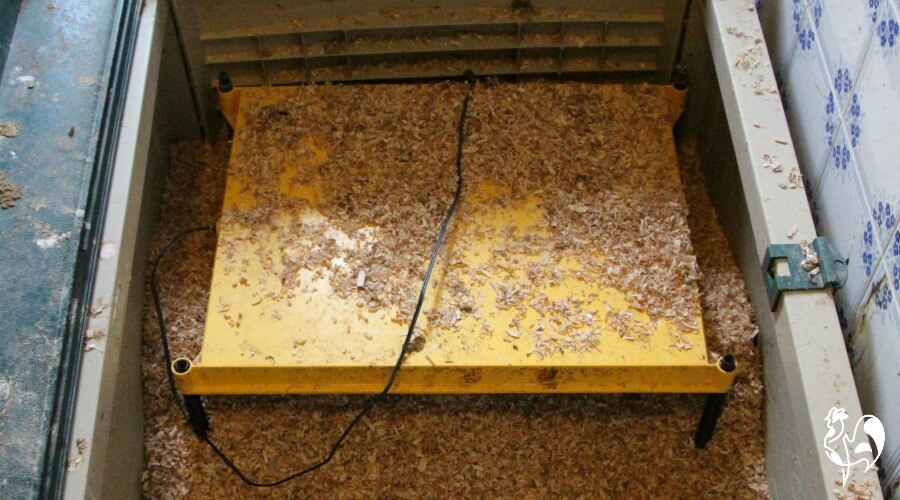 Yep - chicks make a mess! My EcoGlow 1200 before the Brinsea cover was available.
Yep - chicks make a mess! My EcoGlow 1200 before the Brinsea cover was available.Brinsea took that feedback on board too, and have now created a plastic top which fits neatly over both the large and the small sized EcoGlows.
These come free for the newer 600 and 1200 models.
If you still have an older EcoGlow 50, you'll need to buy the cover, or keep using the non-slip shelf liners!
My assessment.
I have had both the large and small EcoGlow brooder lamps for several years and love them both.
Over time, Brinsea have taken feedback and improved their design which is a tribute to their willingness to take criticism and deal with it positively.
I've found both models reliable and inexpensive to run. The fact that I've been using the small model for over ten years is itself a testament to their value.
And perhaps most importantly of all, all my chicks have been kept warm and safe underneath them. I have never had a single chick death from over- or under- heating.
If I had to choose, I'd go for the EcoGlow 1200, just because it provides plenty of space for quite a large group of chicks.
What do reviews say?
- More than 80% of reviews on these lamps are positive.
- Of the negative (2 star or less) a lot of comments are about the units not getting hot or not heating the air - but that's the whole point of the radiant heat! It only heats the chick and so is far less of a fire risk.
- Some people don't like the fact that the top of the unit gets dirty because the chicks sit on it. Well, that's the nature of chicks! Even with the new covers, I'd add some shelf liner or similar non-slip surface.
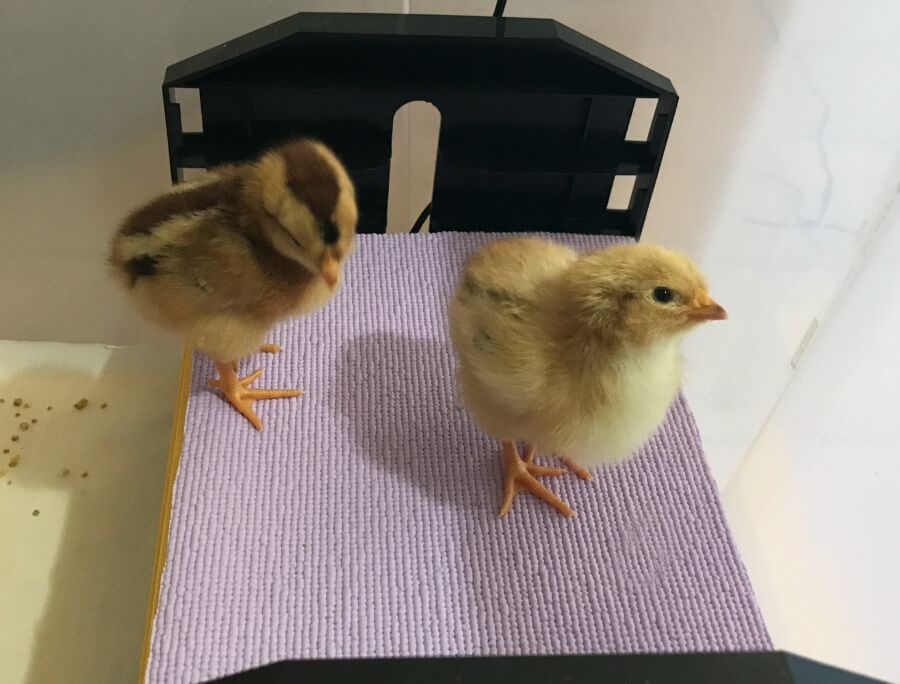 My original EcoGlow (note the different sides).
My original EcoGlow (note the different sides).- Overall, though, the reviews of both these heat lamps are excellent.
Which would be the best brooder lamp for you?
- If you intend to hatch no more than an absolute maximum of ten chicks at a time, the Ecoglow 600 is ideal and will be fine until your chicks are not needing extra heat any more.
- If you think you might want to hatch more than ten chicks, particularly if they're large (that is, not bantam) breeds, I'd suggest the larger EcoGlow 1200.
Would I recommend them?
If you've ever read any of my other product reviews, you'll know I use a "golden egg" scoring system, where one egg means "don't waste your money" and five means "this product is a must-have".
For both the EcoGlow heat lamps, my award is...
A Fabulous Five Golden Eggs!

If you're thinking of incubating, hatching and raising chicks, you might find these pages helpful.
- Home
- Chicks in the Brooder
- Lamp review
